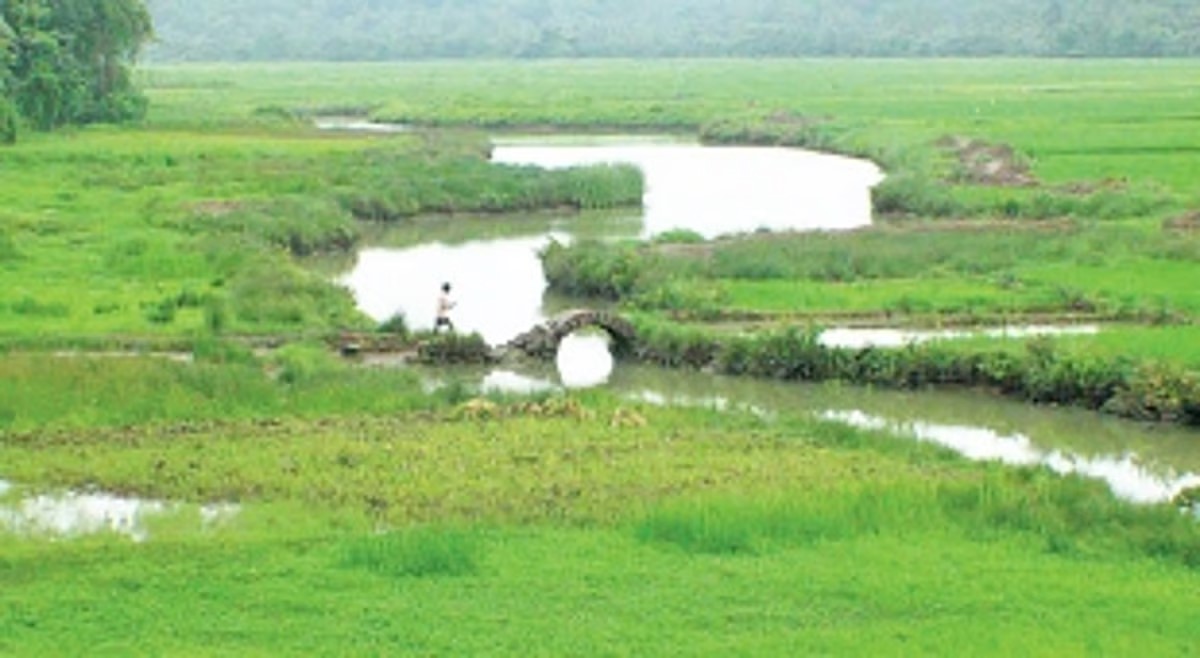This system which made Goa what it is over the centuries, can thus be easily damned, forgotten and effectively manipulated

Our journalist friend Gerard D'Souza wryly commented the other day: "Looks like the Bhumiputra Bill is coming back in three parts." That was insightful. The skulduggery over land here can run so deep, that it even takes quite some time to even comprehend what's happening.
In all the melee, and confusion, one thing stands out very strongly here. That is, the way in which the age-old comunidades, also known as gaunkari networks in their earlier avatar before the Portuguese, are being targeted by one an all.
Anyone wanting to take their grab of land needs to just wiggle their way in and make sure they have the right political godfathers. This system which made Goa what it is over the centuries, can thus be easily damned, forgotten and effectively manipulated.
But there is nothing new about this. Such attempts have been made since the 1960s in Goa.
Who remembers the A.L. Dias Committee? It was set up in the 1990s to review Goa’s land laws. It was seen as hostile to the comunidades because its recommendations were viewed as favouring greater State control and integration of comunidade lands into the general land revenue framework, effectively eroding their autonomy.
Critics in those days felt the Dias report treated comunidades as obsolete feudal remnants rather than living community institutions. It downplayed their historical and cultural role. At the same time, the report opened the door to easier government acquisition or redistribution of their lands under tenancy and other laws. In the 1960s itself, this was seen as a step toward the dismantling of the comunidades.
Incidentally, Anthony Lancelot Dias (1910-2002) was an Indian Civil Service (ICS) officer. He chaired an expert committee on agricultural and land issues for Goa in the early 1960s (appointed in Feb 1963) and later rose to being the Governor of West Bengal, between 1971-79.
The Dias Committee’s report included a dissenting note. One member argued that comunidades were not relics but vital institutions safeguarding common resources. That their problems stemmed from misuse and State interference rather than from the system itself. This dissent note warned that implementing the majority’s recommendations would amount to dismantling a centuries-old community-based governance structure. It would bring in bureaucratic control, thus undermining local autonomy and the local heritage.
Critics of Goa’s comunidades often portray these institutions as feudal, landlord-style bodies that historically extracted rent, excluded women from membership, and were dominated by upper-caste elites. Thus, the comunidades are made to be seen as socially unjust and outdated.
Yet, in reality, the comunidades can also be seen as collective village landholding institutions with roots going even before Portuguese rule. Comunidades functioned more as community trusts rather than private landlords. Their membership rules reflect the historical socio-legal contexts; these can be democratically reformed without dismantling the system. Comunidades also served broader village needs. They funded public works and preserved community resources; modern individualised land control has often failed to do this. One can see its fruits elsewhere too.
Take the case of the khazans. Without doubt, the comunidades played a key role in developing and maintaining Goa’s khazan ecosystem. The benefits were many. Flooding was avoided in low-lying areas. Large areas of fertile lands were reclaimed for Goa. The khazans were ingenuous. They have been defined as "community-managed coastal agro-aquatic lands reclaimed from estuarine marshes".
Anthony D'Mello, a friend from Tivim, the land of many rivers and sluice gates, put it well recently. In response to a discussion, he commented: "Nowadays, the Water Resources people have taken it upon themselves to manage the installation of sluice gates. Using steel plates instead of timber, they have ruined the age-old smooth operation and management of the sluice gates.
"The sluice gates are fitted on a higher level, thereby water does not flow out at low tide. Moreover, due to rust, the hinges do not work properly. This is aptly demonstrated at Cantorlim, Tivim. Due to the faulty operation of the sluice gates, a part of the water body (called the 'poim') is silted over and plants are growing there. They will carry out desilting works at additional cost, without addressing the root problem of the sluice gate."
Till living memory, the comunidades organised and financed the work. This included construction of bunds (riverine protective walls), sluice gates and drainage channels. It also meant regulating the seasonal use, shifting between paddy cultivation and aquaculture. Plus enforcing collective rules. All this was necessary to prevent damage from overuse, misuse or neglect. The communidades' cooperative structure allowed villages to mobilise labour, to share costs and sustain these complex systems for centuries. The proof was there for all to see: khazans for long remained both productive and ecologically resilient.
Comunidades, unlike modern village panchayats, directly owned and managed village lands and resources. This gave them an independent income and real control over development, public works and community welfare. Comunidades could run their affairs without depending on government grants.
(Tenancy laws in Goa should not have been applied to comunidades because these village institutions traditionally managed land collectively for the wider community and the village. Imposing tenancy legislation, which was meant for landlord-tenant relationships, disrupted this community framework. It transferring ownership of comunidade lands to individual tenants, eroding their common-property character, and undermined the financial base of comunidades. This completely mauled the institutions.)
Comunidade decisions were made by local shareholders. The latter had a "vested interest" in the land’s long-term productivity. This spelt continuity, fiscal discipline and the protection of common property. By contrast, today's panchayats function largely as the administrative arms of the State. They depend on external funding and are definitely more vulnerable to political interference. It is not a coincidence that we see the problems we repeatedly face.